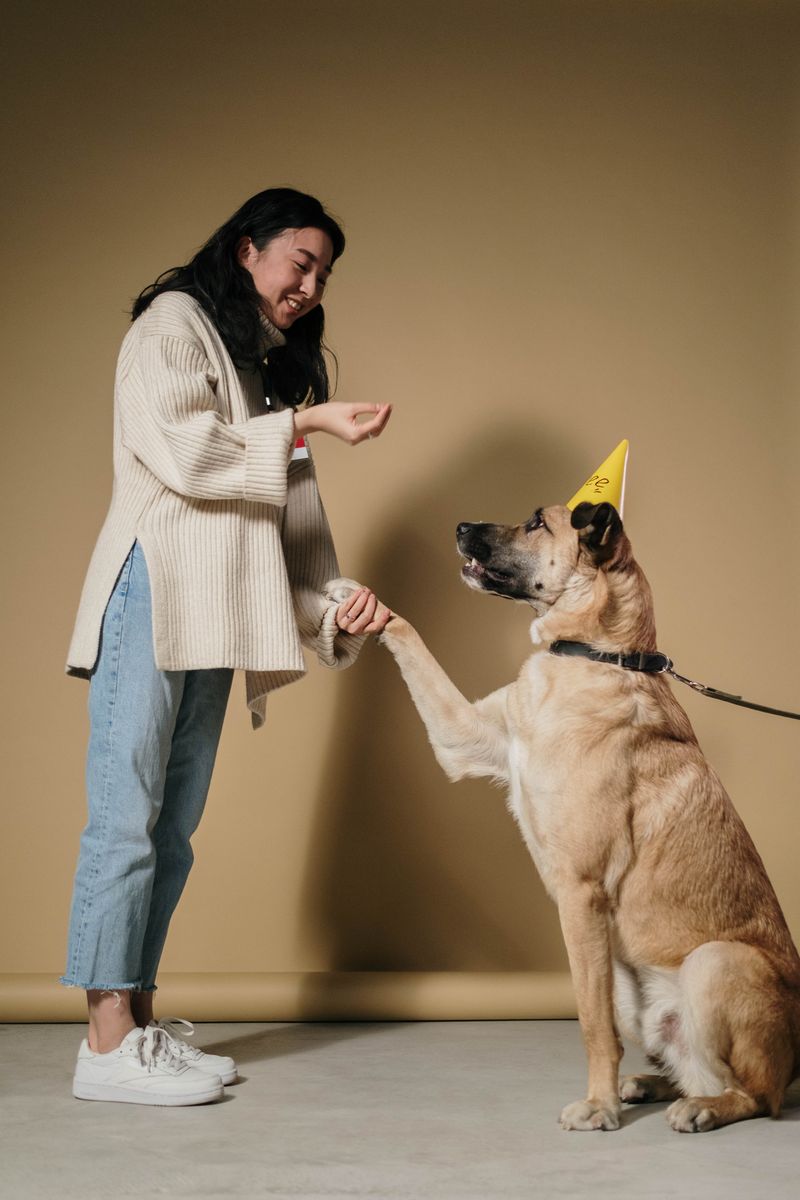- How to Stop a Dog Chewing Things: A-List Dog Trainer Ben Randall Provides Expert Advice
- Paws for Thought: When Puppy Chewing Becomes a Problem
- Prevention is Key: Nipping Chewing Behavior in the Bud
- Step 1: Creating a Safe Space Away from Temptation
- Step 2: Providing an Irresistible Chew Toy
- Step 3: Monitoring the Dog’s Behavior and Gradually Extending Freedom
- Step 4: Patience and Trust in the Process
- Expert Advice from Ben Randall
- Getting Help from Ben Randall
- Editorial: The Importance of Addressing Chewing Behavior
- You might want to read !
How to Stop a Dog Chewing Things: A-List Dog Trainer Ben Randall Provides Expert Advice
Paws for Thought: When Puppy Chewing Becomes a Problem
Almost all puppies have a natural instinct to chew things as they explore the world, but this behavior usually diminishes as they grow older and mature. However, there are instances when the chewing persists into adulthood, causing distress to both the dog and its owner. This week, we received a message from a concerned reader who sought the help of renowned dog trainer Ben Randall.
The reader, identified as S.S., shared their experience with their 20-month-old Bearded Collie who had shown a penchant for chewing the dining room chairs and table whenever they were left uncovered. Despite efforts to cover the furniture, the dog still found ways to indulge in destructive behavior, even damaging one of its baby teeth. S.S. acknowledged that Bearded Collies tend to mature later than other breeds, but asked for guidance on how to address the ongoing issue.
Prevention is Key: Nipping Chewing Behavior in the Bud
Ben Randall emphasized that addressing chewing behavior in puppies is best done early on to prevent it from becoming a long-term issue. Drawing on his own experience, he shared that he closely supervises his dogs when they are young and immediately intervenes if they cause damage to property or themselves. This involves giving them the “leave” command, removing the item, and providing a safe alternative to chew on.
Unfortunately, the reader’s Bearded Collie did not respond to this approach, and a different strategy was needed. Randall emphasized that the ongoing chewing behavior posed risks to both the dog’s safety and the owner’s property. To tackle the issue effectively, he suggested a four-step process of removing temptation, creating a safe space for the dog, and breaking the pattern of destructive behavior.
Step 1: Creating a Safe Space Away from Temptation
Randall advised finding a calm and relaxed place for the dog to sleep, both at night and when the owner is not around. He recommended using a crate or similar confined bed area and transforming it into a positive and inviting environment. This can be achieved by following his crate training techniques, which include positive reinforcement.
Step 2: Providing an Irresistible Chew Toy
To make the safe space even more appealing, Randall suggested finding a chew toy that the dog truly enjoys, such as an antler or cow horn. This special chew should only be given to the dog when it is placed in its crate at night or when the owner is away. The toy should keep the dog occupied and create a positive association with its safe space.
Step 3: Monitoring the Dog’s Behavior and Gradually Extending Freedom
Once the dog is content in its crate with the chew toy, the owner can begin gradually allowing the dog to have access to the rest of the house again. However, this should be done cautiously and with close monitoring. Randall recommended using a baby monitor or a dedicated app to keep an eye on the dog’s behavior when the owner is not present. If any signs of destructive behavior emerge, the dog should be promptly placed back in its crate with the chew toy.
Step 4: Patience and Trust in the Process
Randall assured the reader that dogs typically outgrow destructive chewing behaviors when temptation is removed and retraining is implemented. He emphasized the importance of remaining patient and trusting in the process. The dog will soon associate its crate or bed area with the chew toy, and the owner can expect the dog to become relaxed and calm when left alone.
Expert Advice from Ben Randall
Drawing on his personal experience, Randall recounted a similar issue he faced with a young Labrador who repeatedly chewed and broke her water bowls. His solution was to remove the bowl completely and provide water only when supervised. After a few months, the dog stopped the destructive behavior, and at 15 months old, the water bowl was reintroduced successfully.
Getting Help from Ben Randall
For more detailed advice based on Ben Randall’s positive and reward-based training methods, individuals can reach out to him for one-on-one training sessions or residential training at BGHQ in Herefordshire. Interested individuals can contact Randall at 01531 670960 or visit www.ledburylodgekennels.co.uk. Dog owners can also take advantage of a free seven-day trial of the Gundog app, which offers comprehensive training resources and costs £24.99 per month or £249.99 per year.
Editorial: The Importance of Addressing Chewing Behavior
Dealing with a dog that constantly chews on objects can be frustrating and potentially hazardous. Not only can it lead to property damage, but it also poses risks to the dog’s health and well-being. Electrical wires and small objects can be swallowed, causing life-threatening blockages or injuries. It is crucial to address chewing behavior early on to ensure a safe and harmonious environment for both dogs and their owners.
Philosophical Discussion: Understanding Canine Behavior
Dog chewing behavior can be attributed to various factors, including teething, boredom, anxiety, or the simple desire to explore their surroundings. It is essential for owners to recognize that chewing is a natural instinct for dogs and that redirecting this behavior is part of responsible pet ownership. By providing appropriate chew toys and creating a positive environment, owners can help their dogs channel this instinct in a safe and constructive manner.
Advice for Dog Owners
If you are experiencing issues with a dog that continues to chew on items despite reaching adulthood, following Ben Randall’s expert advice may prove beneficial. By implementing the four-step process outlined, you can create a safe space for your dog, provide it with an appealing chew toy, monitor its behavior, and gradually reintroduce freedom. Patience and trust in the process are key.
Remember, each dog is unique, and some may require additional support or specialized training. Seeking guidance from a professional dog trainer like Ben Randall can provide tailored techniques and strategies to tackle specific behavior issues effectively.
By addressing and managing chewing behavior, dog owners can ensure a harmonious coexistence with their pets and create a safe home environment for all.

<< photo by cottonbro studio >>
The image is for illustrative purposes only and does not depict the actual situation.




